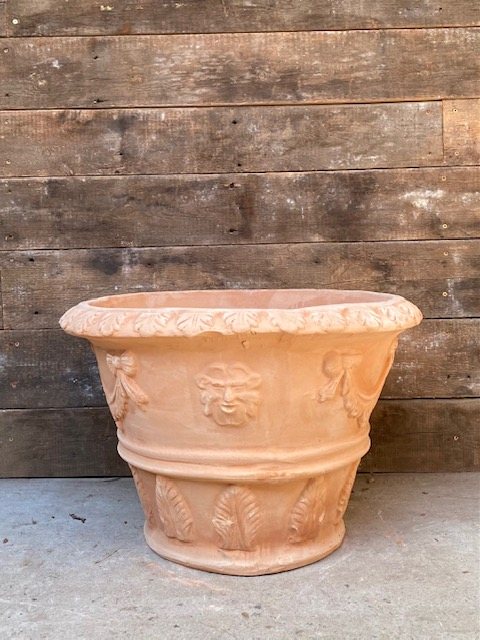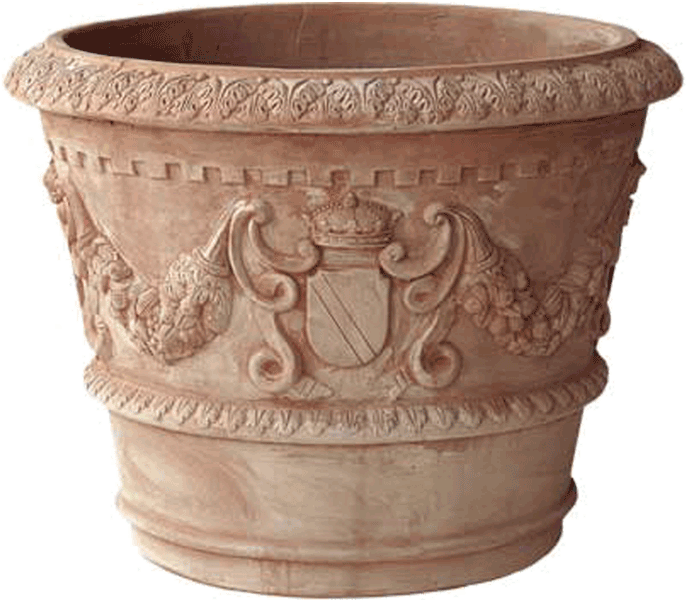When it comes to enhancing the beauty of your indoor or outdoor spaces, decorative terra cotta planters are a timeless choice. Their rich earthy tones, durability, and versatility make them an essential element for any gardener or home decorator. In this guide, I’ll share my personal experiences, insights, and everything you need to know about choosing, using, and caring for decorative terra cotta planters.
What Are Decorative Terra Cotta Planters?
Terra cotta, which is Italian for “baked earth,” refers to clay that has been shaped and fired in a kiln to create pottery. Decorative terra cotta planters are typically unglazed, allowing for a natural, rustic vibe. These planters come in various designs, shapes, and sizes, making them perfect for any type of plant, from small succulents to large ferns.
The History and Tradition of Terra Cotta Planters
Terra cotta has been used for thousands of years, with origins tracing back to ancient civilizations in Greece, Rome, and China. These planters were traditionally used for both practical and decorative purposes. Today, they continue to be a popular choice among garden enthusiasts due to their aesthetic appeal and functionality.
Benefits of Using Decorative Terra Cotta Planters
There are numerous reasons why decorative terra cotta planters are a favorite among gardeners. Let’s explore the main benefits:
- Breathability: Terra cotta allows air and moisture to permeate through the walls, preventing root rot.
- Temperature Regulation: The porous nature of terra cotta helps regulate soil temperature, providing a stable environment for plant roots.
- Style Versatility: Available in various designs and sizes, they can complement any decor style, from rustic to contemporary.
- Durability: When cared for properly, terra cotta can last for many years, withstanding the elements.
- Natural Aesthetics: The earthy tones provide a natural look that enhances the beauty of your plants.
Choosing the Right Decorative Terra Cotta Planters
Choosing the right planter is essential for the health of your plants and the aesthetics of your space. Here are some factors to consider:
1. Size Matters
Consider the size of the plants you intend to grow. A larger planter allows for more soil, which means better moisture retention. Conversely, smaller planters are great for smaller plants or succulents.

2. Design and Style
From classic and simple designs to ornate, decorative pieces, terra cotta planters come in all styles. Choose a style that fits your garden or home décor.
3. Drainage Holes
Ensure that your planter has drainage holes. This is crucial for preventing water buildup, which can lead to root rot.

4. Quality and Thickness
Look for high-quality, thicker terra cotta that can withstand temperature changes without cracking.
5. Finish and Color
While most terra cotta planters are unglazed, some may have a glaze or a painted finish. Choose one that fits your aesthetic preferences.

Different Types of Decorative Terra Cotta Planters
1. Classic Terra Cotta Pots
These are the standard terra cotta pots you often think of. They are versatile and can be used for almost any plant.
2. Self-Watering Planters
These planters have a reservoir at the bottom, allowing plants to absorb moisture as needed.

3. Hanging Terra Cotta Planters
Perfect for creating visual interest at different heights, these planters can be hung from hooks or brackets.
4. Decorative Planter Boxes
These larger rectangular planters are ideal for landscaping and can be used for herbs, flowers, or small shrubs.

Decorative Terra Cotta Planter Care Tips
Proper care will prolong the life of your decorative terra cotta planters and the plants within them. Here are some essential tips:
1. Watering Techniques
Due to their porous nature, terra cotta pots dry out faster than plastic or ceramic pots. Water your plants thoroughly and check the soil moisture before the next watering.

2. Seasonal Storage
In colder climates, it’s best to bring terra cotta planters indoors during the winter to prevent cracking due to freezing temperatures.
3. Cleaning Your Planters
Over time, minerals can build up on terra cotta. Use a mixture of vinegar and water to clean your pots, and rinse thoroughly to avoid harming your plants.
4. Fertilizing
Use an appropriate fertilizer to promote healthy growth. Terra cotta pots may require more frequent fertilization due to their porous nature.
Decorative Terra Cotta Planters in Home Decor
Not only are decorative terra cotta planters great for plants, but they also serve as beautiful home décor elements. Here’s how to incorporate them into your space:
1. Centerpieces
Use a large planter as a centerpiece on a dining table or coffee table. Fill it with seasonal flowers for an inviting touch.
2. Shelving Displays
Group smaller planters on bookshelves or floating shelves for a charming display that brings life to your walls.
3. Entryway Accents
Place decorative planters filled with greenery or colorful flowers in your entryway to create a welcoming atmosphere.
4. Patio or Balcony Style
Use a combination of different sized terra cotta planters to create an appealing outdoor garden space.
Comparing Decorative Terra Cotta Planters to Other Materials
Let’s take a look at how decorative terra cotta planters compare to other popular planter materials such as plastic, metal, and ceramic.
| Material | Durability | Weight | Price Range | Air Permeability | Style Options |
|---|---|---|---|---|---|
| Terra Cotta | High | Medium | Moderate | High | Various |
| Plastic | Moderate | Light | Low | Low | Various |
| Metal | High | Heavy | High | Low | Modern |
| Ceramic | Moderate | Medium | Moderate to High | Medium | Various |
Pros and Cons of Decorative Terra Cotta Planters
Pros
- Natural aesthetics that blend well with plants.
- Great air and moisture regulation.
- Durable with proper care.
- Variety of styles and sizes for all types of plants.
Cons
- Can be heavy and difficult to move when filled with soil.
- More susceptible to cracking in freezing temperatures.
- May require more frequent watering than plastic pots.
Frequently Asked Questions (FAQs)
Are decorative terra cotta planters safe for food plants?
Yes, decorative terra cotta planters are safe for growing food plants, especially if they are unglazed. Just ensure you wash them thoroughly before planting to remove any residues.
How often should I water plants in terra cotta planters?
Watering frequency depends on the type of plant and environmental conditions, but generally, you’ll want to check the soil moisture every 2-4 days and water when the top inch of soil is dry.
Can I use terra cotta planters for indoor plants?
Absolutely! Terra cotta planters are excellent for indoor plants due to their breathability. Just ensure they are placed in a location with good drainage to avoid excess water.
Do terra cotta planters need to be sealed?
Sealing is not necessary, but if you want to prevent the natural aging and staining of the clay, you can apply a sealant designed for pottery.
What plants grow best in terra cotta planters?
Plants that prefer drier soil conditions, such as succulents, cacti, and many herbs, thrive in terra cotta planters.
Conclusion
Decorative terra cotta planters are more than just functional gardening tools; they are a pathway to elevate your home and garden aesthetics. With their unique charm and practical benefits, it’s no wonder they’ve stood the test of time. Whether you’re a novice gardener or a seasoned plant enthusiast, incorporating these beautiful planters into your space can enhance your gardening experience. Happy planting!